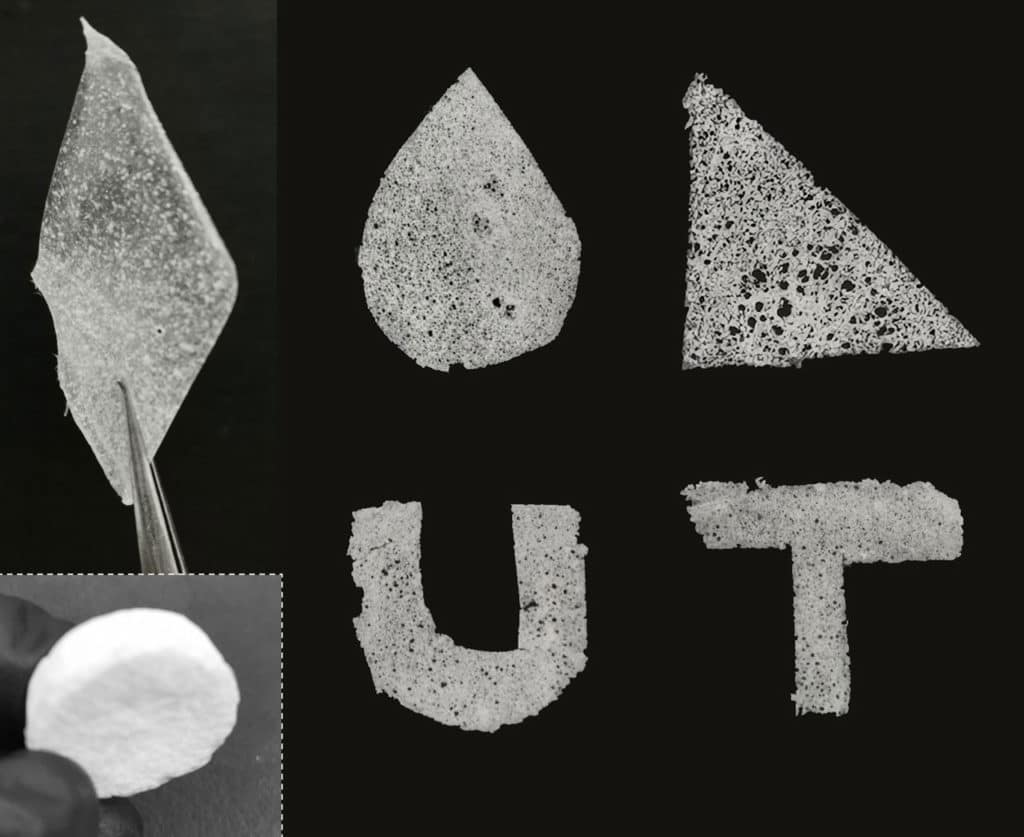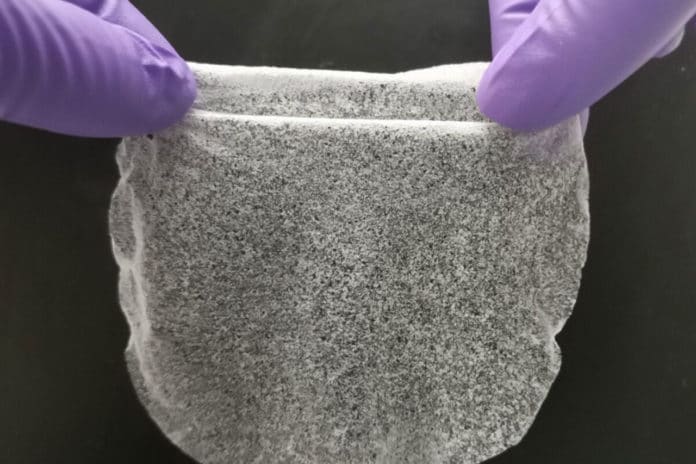Water scarcity is one of the major problems in much of the world’s population. Almost two-thirds of the world’s population experience severe water scarcity for at least one month each year.
Now, engineers at The University of Texas at Austin have developed a solution that could help people in these areas access clean drinking water. They developed a low-cost gel film made of abundant materials that can pull water from the air in even the driest climates.
The team used renewable cellulose and a common kitchen ingredient, konjac gum, as a main hydrophilic (attracted to water) skeleton. The open-pore structure of gum speeds up the moisture-capturing process. Another designed component, thermo-responsive cellulose with hydrophobic (resistant to water) interaction when heated, helps release the collected water immediately so that overall energy input to produce water is minimized.
Making the gel is also fairly simple; the basic ingredients are mixed together and then poured onto a mold, where it sets in two minutes. Then, it just needs to be freeze-dried, and it can be peeled off the mold and used immediately after that. The film is flexible and can be molded into a variety of shapes and sizes, depending on the need of the user. The researchers said the reaction is a simple one, which reduces the challenges of scaling it up and achieving mass usage.

The materials are extremely inexpensive to produce and cost a mere $2 per kilogram. A single kilogram can produce more than 6 liters of water per day in areas with less than 15% relative humidity and 13 liters in areas with up to 30% relative humidity.
Most current attempts at pulling water from desert air are typically energy-intensive and do not produce much. Although 6 liters does not sound like much, researchers say that creating thicker films or absorbent beds or arrays with optimization could drastically increase the amount of water they yield.
The research was funded by the U.S. Department of Defense’s Defense Advanced Research Projects Agency (DARPA) and drinking water for soldiers in arid climates is a big part of the project. The researchers also envision the low-cost gel film as something that people could someday buy at a hardware store and use in their homes because of its simplicity.
“This is not something you need an advanced degree to use,” said Youhong “Nancy” Guo, the lead author on the paper and a former doctoral student in Yu’s lab. “It’s straightforward enough that anyone can make it at home if they have the materials.”
